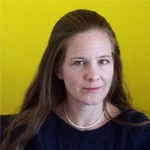A Teacher Who Approves of School Choice?
School choice. The term was demonized in my teacher credentialing courses and by my own mother, who had been teaching in public schools since she was 20 years old. Everyone was doing it, so I toed the line as well, but only for a short while.
My Ah-Ha Moment
My first teaching assignment was in an inner-city elementary school, where 100 percent of the students were in the free and reduced-price lunch program and all but one of my students was an English Language Learner. It was a very “at-risk” population I was teaching. The school was under Program Improvement for low test scores, meaning it was under a lot of scrutiny by district officials to raise test scores before the inevitable: bussing children to a different school and an eventual shut down or takeover of the school by the state.
Feeling the pressure, I dug through my old textbooks and term papers to find the best ways to differentiate and scaffold learning, to make the curriculum and standards accessible to all students, to make educational opportunity available for each student. Fairness above all.
I remember one specific lesson, a language arts lesson during our uninterrupted three-hour daily block of language arts, regarding spelling patterns. I recalled reviewing the lesson the day before and thinking of my students, how disengaging the lesson would be, especially for an “at-risk” population, so I used my knowledge of pedagogy and decided to implement different learning modalities into my lesson.
The lesson itself dictated I write the words on the board and read them aloud, and then refer to the alphabet chart, sounding out each letter while they sat, stationary, absorbing it all. This lesson aligned with the presumption that my fifth graders could not read or write, and thus must be delivered via this scripted curriculum in my hands.
I looked out into my classroom of 36 students, eyes glazed over from boredom and hunger, and altered the lesson right then and there.
I printed out the words and affixed sticky tape to the back, and distributed them at random to each group. I told the students to try and read the words together and make sense of them, and then discern if there was any pattern. After a few minutes I asked them to share their findings with the class. Even my most struggling students were engaged in the lesson for once.
Just then, a district official walked in, and by lunchtime, I had a letter in hand stating I was being placed on an improvement plan. Apparently, I didn’t know how to teach.
I looked at my classroom of struggling children, the ones statistics say often drop out and continue generational poverty, and my heart ached.
All of my students could read, despite what the district said, and all had a love of learning, even if they didn’t show it on a worksheet or in one of their 18 standardized tests every year. My students were not failing school, school was failing them and I didn’t want to be a part of it.
I looked back at my own schooling (public school as well) with fond memories, so opposite of the school I was working in, and thought:
Why can’t my students have a better school? Why shouldn’t they deserve better? Why must they be forced to attend a school, which fails to educate them, just because of the neighborhood they live in? Why should they be denied private school or homeschool due to their poverty status even though both parents were working? Why couldn’t I just scoop them all up and put them in my old elementary school, a school that still cared about educating children?
What It’s Like “Switching Sides”
A few years later, I found myself teaching in a charter school, although I was hesitant at first to accept the job because I’d heard only bad things about charter schools from every educator I knew.
It was a small school, less than 100 students, but what it lacked in size it made up in so many other ways. We had a very diverse population, and most students attended the charter because they hadn’t succeeded at the public high schools in the area for a plethora of reasons. Our school offered smaller class sizes, a family-like network of support, and less red tape so that we could ditch scripted curriculum and actually teach to the needs of our students.
One student in particular came to us from the largest high school in the area, with abysmal grades and a behavior record to match. She had been enrolled in every state and district program possible, all modifying or supplementing her education in hopes to give her extra help in school. She floundered in my classroom, often off task, and then, she disappeared.
No one knew what happened until a year later when she appeared in my classroom again, re-enrolled. A relative had died, and she dropped out of school but wanted to give it one more try.
She met every “at-risk” category, and even told me how schools automatically pigeonholed her into certain programs simply because she was a minority, living in poverty, with low test scores. She felt as if the public school was forcing her to meet lower expectations, to fail.
I told her that would not happen in this school, and that I saw her as a senior, despite her junior status. (She was a year behind and then some.) I told her she would graduate on time, despite what everyone told either of us.
I checked in on her often, helped her study for her exit exam, worked to design instruction that met the standards yet piqued her interest and taught in ways she could best comprehend.
She graduated on time and went on to college. She thanked me personally for believing in her. She said, had she stayed in the neighborhood public school, she’d have dropped out and stayed out for sure. With some school choice allowed in our state, she was able to attend a charter school that allowed her to excel.
The Future I See for Public Education
I do not have anything against public school, although it may seem so. I am against banning school choice.
I came to this realization when looking at my newborn and thinking, do I want for him to attend the local public school? If not, are there other options? With few options at my disposal, I felt stuck. If I could not afford the only local private school, or did not like their school, I would have to enroll my son in what I considered a failing school, and this felt unjust.
Sadly, I am seen by others in my field as the minority for my support of school choice.
Many teachers feel that school choice is a ploy to destroy public education to prevent those without excess income from getting an education or that it is against the separation of church and state (when speaking of vouchers) or that public school teachers will be left without a job. In districts where school choice is allowed, I have not seen these fears become reality.
I hope there are more teachers who share my opinion but perhaps are just kept quiet for fear of retribution. Unfortunately, I haven’t met any, and that is probably because I, too, have kept quiet, so that I am not chastised by my mentors and peers. However, I have grown tired of being quiet. I care about and rally for the best educational options for children, which is why I chose to work in education.
As my oldest child approaches kindergarten, I dread the day he has to attend our assigned neighborhood school; it is not a good fit for him. I the parent know my son best, and I know that school choice will allow him to attend the school in which he can best learn, grow and thrive—a school not chosen by an arbitrary boundary map but by the expertise of a stakeholder—in this case myself, his mother.
If we as a nation were to ban school choice, it would be a social injustice.
Students do not deserve to attend a school that—even if it is not “failing” all kids—doesn’t work for them. All children deserve a choice to seek the best educational fit for their needs.
*Opinions expressed by our guest bloggers are their own and do not necessarily reflect those of EdChoice.




